Table of Contents
ToggleIn a world where every business is racing to stay ahead, the cloud has become the ultimate playground for innovation. Enter Platform as a Service (PaaS), the superhero of cloud computing that swoops in to save developers from the clutches of mundane infrastructure management. Imagine having the power to focus solely on building and deploying applications while the cloud takes care of the heavy lifting. Sounds dreamy, right?
Overview of PaaS Cloud
PaaS cloud computing streamlines application development, enabling teams to innovate rapidly. It simplifies the deployment process while eliminating infrastructure management tasks.
Definition of PaaS
PaaS stands for Platform as a Service. This cloud computing model provides a platform allowing developers to build, test, and deploy applications efficiently. Users gain access to hardware, software, and networks, all maintained by a cloud provider. By utilizing PaaS, development teams can focus on coding and application features instead of worrying about underlying infrastructure complexities. Examples include Heroku and Google App Engine.
Key Features of PaaS Cloud
PaaS cloud offers several essential features that enhance the development process. Integrated development environments facilitate seamless coding experiences. Scalability allows applications to adjust resources based on demand. Various built-in tools support development activities, such as database management and application monitoring. Additionally, collaboration features enable teams to work together in real-time, enhancing productivity. Security measures, including data encryption and access controls, safeguard applications deployed in the cloud.
Benefits of PaaS Cloud

PaaS cloud offers significant advantages, particularly in enhancing development efficiency and scalability.
Scalability and Flexibility
Scalability stands as a primary benefit of PaaS cloud. Developers can scale applications instantly to handle varying user demands. This convenience allows teams to allocate resources effectively, responding to traffic spikes without delays. Flexibility comes into play since developers can choose the services and architectures that suit their needs. Organizations can adapt quickly to changes in the market without extensive infrastructure changes. Developers maintain control over their applications while relying on the PaaS provider for handling the underlying infrastructure.
Cost Efficiency
Cost efficiency proves vital in the PaaS model. Companies can avoid significant capital expenditures by utilizing a pay-as-you-go pricing structure. This method reduces costs associated with maintaining physical servers, as the cloud provider manages infrastructure expenses. Developers gain access to numerous tools and resources without additional charges, streamlining the development process. Operational costs decrease significantly as businesses scale up or down based on demand. Budgeting becomes simpler, allowing organizations to allocate resources effectively across projects.
Popular PaaS Cloud Providers
Many companies rely on leading PaaS cloud providers to streamline application development. These platforms offer a variety of tools and services that enhance the development process.
Google App Engine
Google App Engine supports developers with a fully managed serverless platform. Users find it particularly effective for building web applications. Its automatic scaling adjusts to workload changes, maintaining performance during traffic peaks. Integrated services such as Firestore and Cloud SQL simplify backend management. Additionally, collaboration tools allow teams to work more effectively and efficiently.
Microsoft Azure
Microsoft Azure PaaS provides a robust environment for developing applications across multiple programming languages. The platform features Azure App Service, which enables quick deployment and scaling. Support for Kubernetes also enhances container management. Development teams benefit from integrated development environments and access to numerous built-in tools. It’s designed for enterprise-level scalability and strong security measures, including advanced threat protection.
Heroku
Heroku simplifies application deployment for developers with an easy-to-use interface. Its platform supports multiple programming languages, providing flexibility in project development. Add-ons available in the marketplace extend functionality quickly and without heavy configuration. Real-time metrics enhance performance monitoring while collaboration features facilitate teamwork. Organizations often appreciate Heroku’s seamless integration with other modern tools and frameworks, making it a preferred choice for many development teams.
Use Cases of PaaS Cloud
Platform as a Service (PaaS) streamlines various processes, making it a vital tool for organizations. It enhances application development and data processing, among other uses.
Application Development
PaaS significantly accelerates the application development process. Developers can focus solely on writing code rather than dealing with server management and maintenance. This approach fosters creativity and innovation, as it integrates tools necessary for building, testing, and deploying applications seamlessly. Real-time collaboration features facilitate teamwork, allowing multiple developers to work on a project concurrently without hindrance. Furthermore, built-in scalability options enable applications to handle varying loads effortlessly. Many organizations leverage PaaS to deploy applications quickly, leading to a faster time-to-market.
Data Processing
Data processing benefits immensely from PaaS solutions. Developers gain access to powerful analytics tools without needing extensive setups. These platforms allow them to process large datasets in real time, facilitating immediate insights. By utilizing PaaS, organizations can adapt their data processing capabilities to meet specific project requirements. They can integrate various data sources easily, streamlining workflows. Security measures provided by PaaS enhance data protection during processing, ensuring compliance with regulations. This flexibility in data management positions PaaS as an attractive option for businesses that rely on data-driven decisions.
Challenges of PaaS Cloud
PaaS cloud solutions present several challenges despite their numerous advantages. Understanding these challenges is crucial for organizations considering this model.
Vendor Lock-In
Vendor lock-in represents a significant concern for many users of PaaS. Once a company commits to a specific platform, migrating data and applications to another service can become complex and costly. Limited interoperability with other services compounds this issue, making it difficult for organizations to switch providers if needed. Adjusting to new standards or APIs may add complexity, requiring additional development resources. Businesses might face a situation where they become dependent on the provider’s tools and services, limiting flexibility in future technology decisions.
Security Concerns
Security concerns frequently arise with PaaS cloud environments. Sharing infrastructure with other clients creates potential vulnerabilities that can lead to data breaches or unauthorized access. Organizations often express worry about data privacy, especially when storing sensitive information on third-party servers. Compliance with regulations such as GDPR or HIPAA poses additional challenges, as companies must ensure the provider meets necessary security standards. Trusting a vendor to implement robust security measures is essential, yet maintaining oversight and control over application security can create tension between organizations and their chosen PaaS provider.
PaaS cloud solutions represent a pivotal advancement in application development. By removing the complexities of infrastructure management, they empower developers to innovate and deploy applications swiftly. The scalability and flexibility of PaaS enable organizations to adapt to changing market demands without significant investments in hardware.
While the benefits are substantial, it’s crucial for businesses to navigate the challenges of vendor lock-in and security concerns. Choosing the right PaaS provider involves assessing their capabilities and security measures. Ultimately, PaaS can be a transformative tool for organizations looking to enhance their development processes and drive innovation in a competitive landscape.







